Introduction
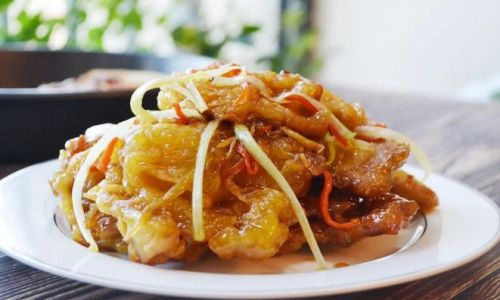
Guo Bao Rou, a beloved dish hailing from Northeast China, is a culinary delight that combines crispy pork slices with a tangy, sweet-and-sour sauce. Often referred to as “Pork Slices in Sweet and Sour Sauce” in English, Guo Bao Rou is a perfect example of the region’s rich culinary heritage. Its origins can be traced back to the Qing Dynasty, where it was initially prepared as a royal dish before becoming a staple in homes and restaurants across Northeast China.
The dish’s appeal lies in its contrasting textures and flavors: the outer layer of the pork is crispy and golden, while the inside remains tender and juicy. The sauce, a blend of vinegar, sugar, soy sauce, and other spices, adds a burst of tangy sweetness that complements the pork perfectly. Making Guo Bao Rou at home may seem daunting, but with the right techniques and ingredients, you can recreate this classic dish with remarkable success.
In this guide, we’ll walk you through the step-by-step process of making traditional Guo Bao Rou. From selecting the right pork cut to mastering the frying and sauce-making techniques, we’ll cover everything you need to know to achieve that perfect, restaurant-quality dish.
Section 1: Ingredients and Preparation
Before diving into the cooking process, let’s first gather all the necessary ingredients and prepare them accordingly.
Ingredients:
- Pork Shoulder or Pork Belly (sliced into 1/4-inch thick pieces): About 1.5 pounds (700 grams). These cuts are ideal for Guo Bao Rou because they offer a balance of fat and lean meat, ensuring a juicy and tender interior.
- All-purpose Flour: 1 cup. This will form the base of the breading that gives the pork its crispy exterior.
- Cornstarch: 1/2 cup. Cornstarch helps achieve an even crispier texture when fried.
- Egg (lightly beaten): 1. The egg acts as a binder, helping the flour and cornstarch stick to the pork slices.
- Water: As needed, for creating a paste-like consistency.
- Vegetable Oil: For frying. You’ll need enough oil to fully submerge the pork slices.
- White Vinegar: 1/3 cup. This provides the tangy element in the sauce.
- Sugar: 1/3 cup. Balances the tanginess of the vinegar with sweetness.
- Soy Sauce: 2 tablespoons. Adds depth and a hint of savoriness.
- Salt: To taste.
- Ginger (minced): 1 tablespoon. Enhances the flavor profile.
- Garlic (minced): 1 tablespoon. Adds a subtle aromatic note.
- Carrots (sliced into thin matchsticks): 1/2 cup. For garnish.
- Green Onions (sliced into thin strips): 1/4 cup. Also for garnish.
- Sesame Seeds: Optional, for an added crunch and nutty flavor.
Preparation:
-
Slice the Pork: Begin by slicing the pork shoulder or pork belly into pieces that are approximately 1/4-inch thick. Aim for uniformity in thickness to ensure even cooking.
-
Prepare the Breading Mixture: In a large bowl, combine the all-purpose flour, cornstarch, and a lightly beaten egg. Gradually add water, a little at a time, until you achieve a paste-like consistency that’s thick enough to coat the pork slices evenly. The mixture should not be too runny or too thick.
-
Prepare the Sauce: In a separate bowl, whisk together the white vinegar, sugar, soy sauce, salt, minced ginger, and minced garlic until well combined. Taste and adjust the seasoning as needed.
Section 2: Cooking the Pork Slices
Now that all your ingredients are prepared, it’s time to cook the pork slices. This involves a two-step frying process to achieve the desired crispy texture.
Step 1: Initial Frying
-
Heat the Oil: Pour enough vegetable oil into a deep frying pan or a wok to fully submerge the pork slices. Heat the oil over medium-high heat until it reaches about 350°F (175°C). You can test the oil’s readiness by dropping a small piece of breading into it; it should sizzle and turn golden brown quickly.
-
Bread the Pork Slices: Working with a few slices at a time, dip each pork slice into the breading mixture, ensuring it’s fully coated. Shake off any excess breading before placing the slices into the hot oil.
-
Fry Until Golden: Fry the pork slices for about 2-3 minutes, or until they turn golden brown and crispy. Use a slotted spoon or frying basket to remove them from the oil and place them on a plate lined with paper towels to drain excess oil.
Step 2: Second Frying (for Extra Crispiness)
-
Increase the Oil Temperature: Once all the pork slices have been initially fried, increase the oil temperature to about 375°F (190°C). This higher temperature will help achieve an even crispier exterior.
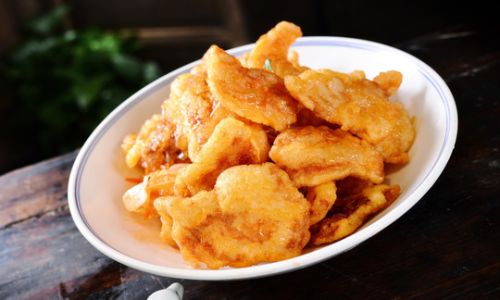
-
Re-fry the Pork Slices: Working in batches again, re-fry the pork slices for an additional 30 seconds to 1 minute. They should turn an even darker golden brown and become even crispier. Remove them from the oil and let them drain on paper towels.
Section 3: Making the Sauce and Serving
With the pork slices crispy and ready, it’s time to make the sauce and combine everything for the final dish.
Step 1: Cook the Sauce
-
Heat a Pan: Place a medium-sized pan over medium heat and pour in the prepared sauce mixture. Stir occasionally as the sauce comes to a simmer.
-
Thicken the Sauce: Allow the sauce to simmer for about 2-3 minutes, or until it slightly thickens and the flavors meld together. If the sauce becomes too thick, you can add a little water to reach your desired consistency.
Step 2: Combine and Serve
-
Add the Pork Slices: Once the sauce has reached your desired consistency, carefully add the crispy pork slices to the pan. Toss gently to coat each slice evenly with the sauce. Be careful not to break the crispy exterior.
-
Garnish: Remove the Guo Bao Rou from the heat and transfer it to a serving dish. Garnish with sliced carrots, green onions, and sesame seeds (if using).
Serving Suggestions
Guo Bao Rou is traditionally served as a main dish, accompanied by steamed rice. The crispy pork slices and tangy sauce make a perfect pairing with the soft, sticky texture of rice. You can also serve it with a side of pickled vegetables or stir-fried greens to balance out the flavors.
Storage and Reheating
If you have leftovers, Guo Bao Rou can be stored in an airtight container in the refrigerator for up to 2 days. To reheat, place the leftovers on a baking sheet lined with parchment paper and bake in a preheated oven at 350°F (175°C) for about 10-15 minutes, or until heated through and crispy again. Alternatively, you can reheat them in a skillet over medium heat, adding a small amount of oil to prevent sticking.
Conclusion
Making traditional Guo Bao Rou at home may require some patience and attention to detail, but the result is well worth the effort. With its crispy exterior, tender interior, and tangy-sweet sauce, this dish is sure to impress even the most discerning palate. Whether you’re serving it to family and friends or simply enjoying it as a treat for yourself, Guo Bao Rou is a culinary experience that brings a touch of Northeast China’s rich culinary heritage to your kitchen.
By following the steps outlined in this guide, you’ll be able to recreate this classic dish with confidence, enjoying every bite as a testament to your culinary skills and appreciation for traditional Chinese cuisine. Happy cooking!
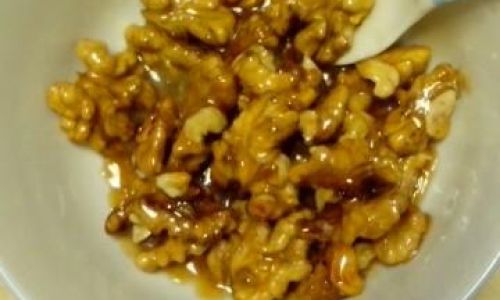


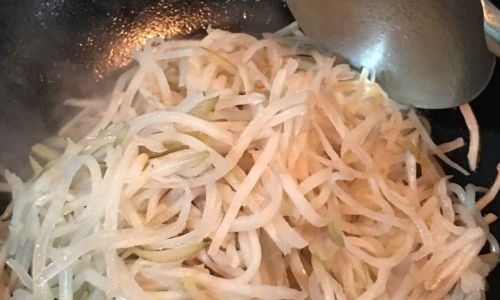
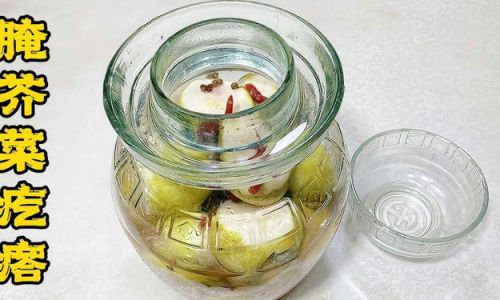
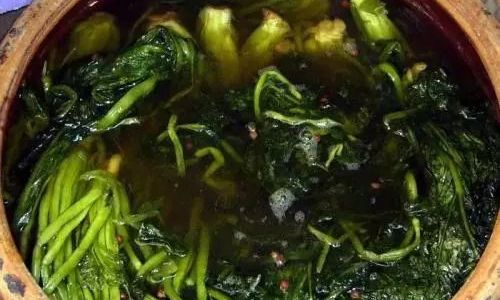
0 comments